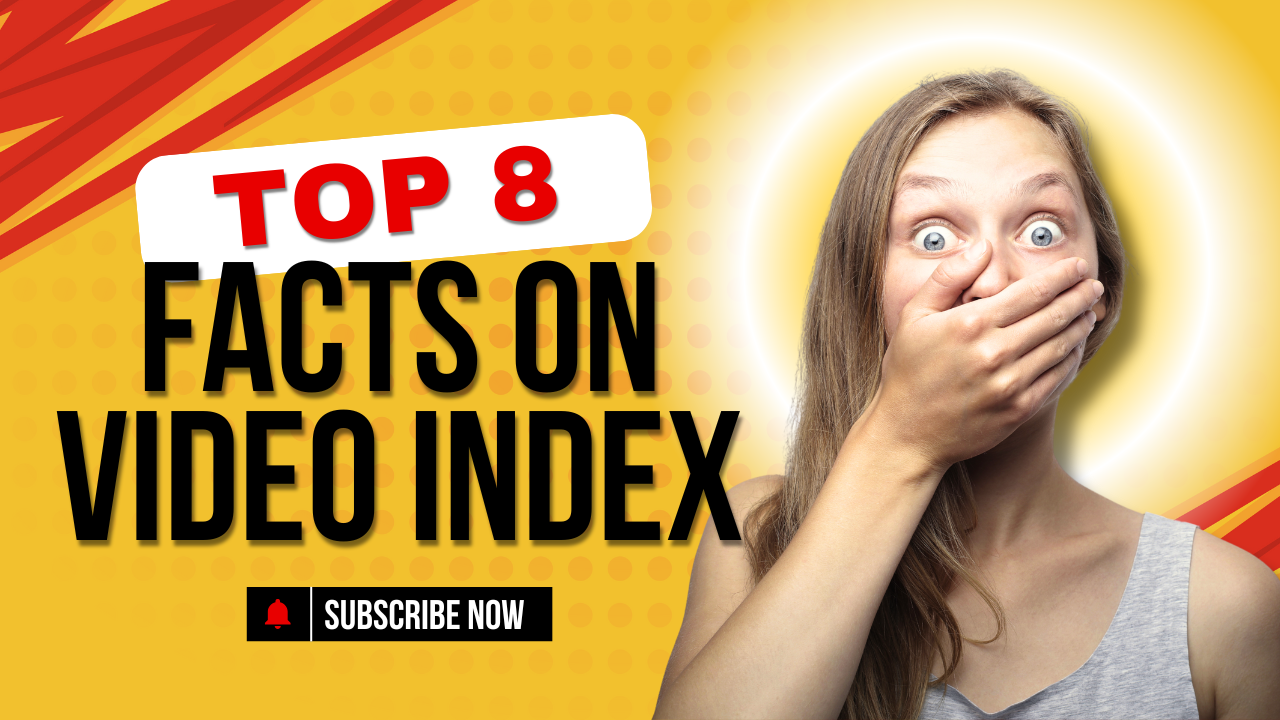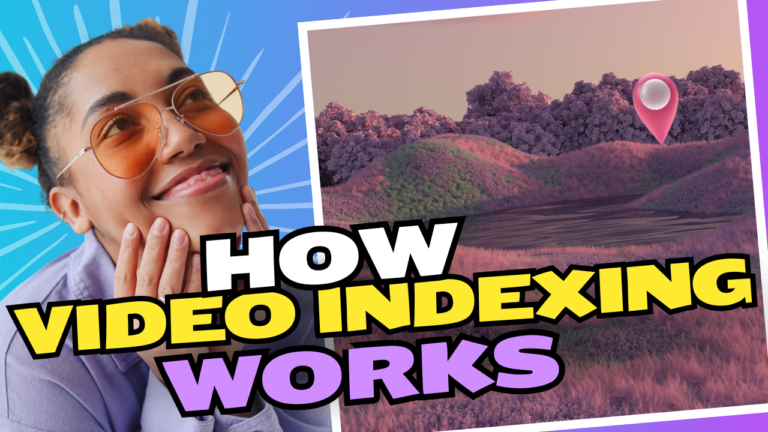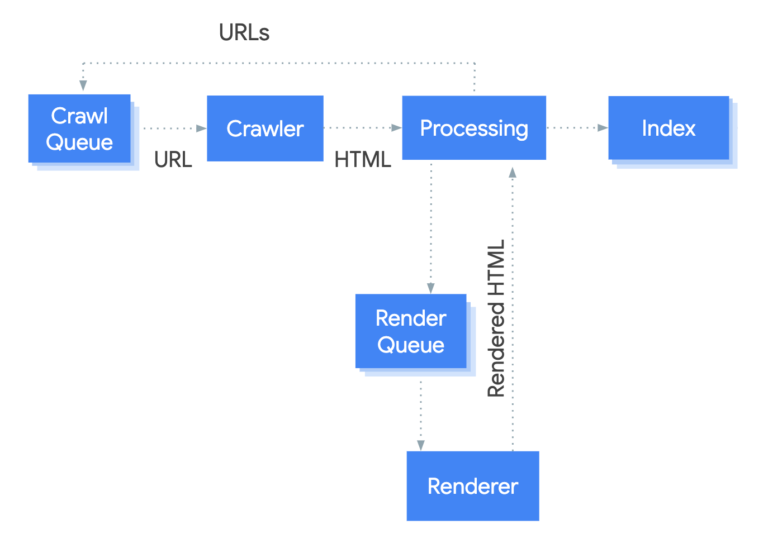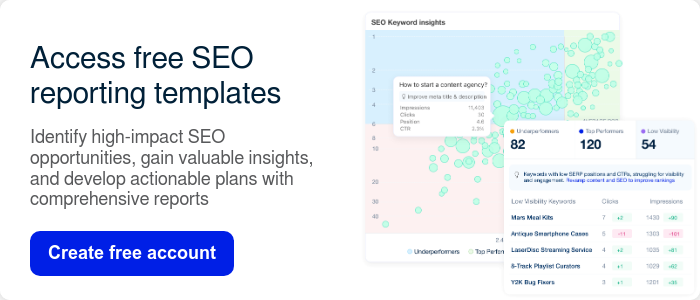Video Indexing and crawling and understanding video file metadata and on-page text related to the video. It also uses structured data to better interpret and index video content.
In the dynamic world of SEO, video content has emerged as a powerful tool to engage audiences and improve site visibility. With the rise of platforms like YouTube and the integration of video in social media, businesses and content creators are increasingly leveraging video to capture attention and convey their messages effectively.
Crafting compelling video content is just the first step; ensuring it is discoverable by search engines like Google is crucial. By understanding how Google indexes video, creators can optimize their content to rank higher in search results, driving more traffic to their sites and enhancing user engagement. This knowledge is essential for anyone looking to harness the power of video content in their digital marketing strategy.
Table of Contents

Credit: support.google.com
The Evolution Of Video Indexing
The digital age has seen a remarkable shift in how search engines understand content. The journey of video indexing reflects this transformation. Video content now plays a pivotal role in search engine results pages (SERPs), thanks to Google’s advanced indexing capabilities.
From Text To Multimedia
Google’s search algorithms once focused on text. Websites with quality text ranked higher. Today, multimedia content, including videos, is equally important. Google now “watches” and “listens” to videos, extracting meaningful data for indexing.
- Googlebot initially crawled text.
- Later, it began to recognize images.
- Now, it understands video content.
Milestones In Search Engine Technology
Google’s search engine technology has hit many milestones:
| Year | Advancement |
|---|---|
| 2005 | Google Video launches |
| 2006 | Acquisition of YouTube |
| 2009 | Introduction of automatic captioning |
| 2017 | Video indexing gets AI boost |
Each milestone has improved video discoverability. Google’s AI can now analyze video content, identify key moments, and index them. This makes videos searchable, just like text articles.
Google’s Video Indexing Framework
Understanding Google’s Video Indexing Framework is key for SEO. This framework helps Google find, understand, and index video content. Let’s dive into how this works.
Core Components
Several core components make up this framework. Each plays a vital role.
- Metadata: Titles, descriptions, and tags tell Google about your video.
- Transcripts: Text versions of your content help Google grasp the video’s topic.
- Thumbnails: A compelling thumbnail can affect click-through rates.
- Video Sitemaps: These guide Google to discover and index your videos effectively.
Role Of Artificial Intelligence
Artificial Intelligence (AI) greatly enhances video indexing. Google uses AI in several ways.
- AI analyzes video content, understanding scenes and spoken words.
- It identifies key moments within videos, making them searchable.
- AI assesses video quality, relevance, and user engagement signals.
This AI-driven approach ensures videos on the internet are easily found and indexed by Google.
Key Factors Impacting Video Indexing
Google’s algorithms are keen on video content. They look at many features to index and rank videos. Let’s explore the key factors that affect how videos are indexed by Google.
Metadata Significance
Metadata holds crucial information about your video. This includes the title, description, and tags. Google reads this data to understand and categorize content. Ensure your metadata is:
- Relevant: It should match your video’s content.
- Keyword-rich: Include primary and secondary keywords.
- Clear: Use simple language that describes the video well.
Transcripts And Captions
Transcripts make your video content accessible to search engines. Captions help in similar ways. They provide:
- Text for Google to crawl.
- Improved user experience for viewers.
- Accessibility for those with hearing impairments.
Video Quality And User Engagement
High-quality videos keep viewers hooked. Google takes notice. Here’s what to aim for:
| Aspect | Why It’s Important |
|---|---|
| Resolution | Crisp images attract more viewers. |
| Content Value | Informative videos earn trust and shares. |
| Engagement Metrics | Comments and likes signal quality to Google. |
Focus on creating videos that people want to watch and interact with. This boosts your chances of ranking higher.
Video Sitemaps And Structured Data
Video sitemaps and structured data are vital for SEO. They help Google understand and index video content. This makes videos show up in search results. Let’s explore how to use these tools effectively.
Creating Video Sitemaps
A video sitemap is an XML file. It gives Google details about video content on a site. This file includes video titles, descriptions, play pages, and thumbnails. A well-crafted sitemap boosts video SEO.
- List each video with a
- Include
- Use
- Add
Submit the sitemap through Google Search Console. This ensures Google finds your videos.
Using Schema.org For Videos
Schema.org markup is a form of structured data. It tells search engines about video content. The markup is added directly to a webpage’s HTML.
- Use the
tag. - Mark up videos with
VideoObjectschema. - Include properties like name, description, and thumbnailUrl.
Schema.org enhances video visibility in search results. It makes rich snippets possible. These snippets attract more clicks.
Right structured data can lead to video features in Google’s carousel. This spotlights your content for users.
Remember to keep your video markup updated. Google needs accurate, fresh data to serve the best results.
Note: The HTML syntax for the H3 headings is provided as per the requirement, even though it’s not standard practice to include HTML tags as text within heading tags.
The Importance Of Thumbnails
The Importance of Thumbnails in video content cannot be overstated. These small images serve as the first impression of your video. They can determine whether a viewer clicks on your video or not. Thus, creating an engaging and relevant thumbnail is crucial for SEO and viewer attraction.
Selection Criteria
To ensure your video stands out, consider these criteria for thumbnail selection:
- Relevance: The thumbnail must reflect the video’s content.
- Quality: High-resolution images attract more viewers.
- Emotion: Images evoking curiosity or emotion perform better.
- Branding: Consistent use of logos or colors boosts brand recognition.
Impact On Click-through Rates
The right thumbnail can significantly impact your video’s click-through rates (CTR). A compelling thumbnail grabs attention and encourages viewers to watch the video. This leads to higher engagement and better SEO rankings.
| Thumbnail Quality | Expected CTR Increase |
|---|---|
| High | Up to 30% |
| Medium | Up to 20% |
| Low | Below 10% |
Note: The table above shows how thumbnail quality can affect CTR. High-quality thumbnails are more likely to lead to higher click-through rates.

Credit: webmasters.stackexchange.com
Optimizing Videos For Better Indexing
Video content is vital for digital marketing success. Google indexes videos to help users find relevant, engaging content. Proper optimization ensures videos reach target audiences effectively. Let’s explore best practices and common pitfalls in video SEO.
Best Practices
Best practices elevate video visibility in search results. Consider these tips:
- Use descriptive titles: Include target keywords.
- Create compelling thumbnails: They grab attention.
- Write informative descriptions: Add keywords and context.
- Add accurate tags: They guide search algorithms.
- Include transcripts: Text versions boost SEO.
- Implement structured data: It helps Google understand video content.
Common Pitfalls To Avoid
Avoid these mistakes to ensure videos index properly:
- Ignoring mobile optimization: Most users are on mobile.
- Neglecting loading times: Fast load speeds keep viewers engaged.
- Skipping metadata: Metadata is key for understanding videos.
- Forgetting to update: Keep information current and relevant.
- Overlooking accessibility: Captions and transcripts make videos accessible.
Monitoring Video Performance In Search Results
Monitoring video performance in search results is crucial. It helps you understand how viewers find and interact with your content. With the right tools, you can track video performance and make improvements.
Tools And Metrics
Several tools measure video performance. Google Search Console is a popular choice. It offers insights into how videos perform in search results.
- Click-through rate (CTR): Shows the percentage of users who click on your video after seeing it in search results.
- Impressions: Counts how often your video appears in search results.
- Watch time: Measures how long users watch your video.
- Engagement: Tracks likes, shares, and comments.
Interpreting Data For Improvements
Data interpretation leads to better video content strategies. Look for patterns and trends in the metrics. Identify what works and what doesn’t.
| Metric | Goal | Action |
|---|---|---|
| Low CTR | Increase clicks | Improve titles and thumbnails |
| Short watch time | Boost engagement | Create more compelling content |
Use this data to optimize your videos. This can lead to better rankings and more views.
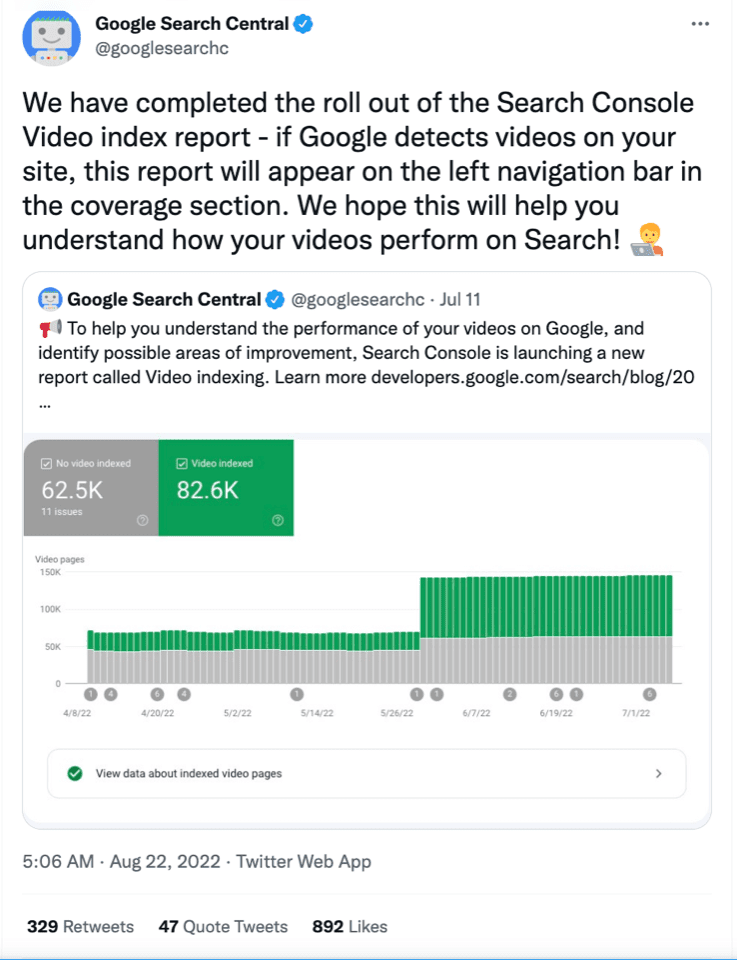
Credit: coalitiontechnologies.com
Future Trends In Video Indexing
As technology evolves, so does the way Google indexes video content. The future of video indexing is shaping up with exciting advancements. Let’s explore what’s on the horizon.
Predictions And Innovations
Artificial Intelligence (AI) leads the charge in transforming video indexing. AI algorithms will likely analyze video content with greater precision. This means better understanding of video narratives, themes, and concepts.
- Enhanced speech recognition will index spoken words within videos.
- Visual recognition tech will identify key visual elements.
- Advanced metadata will provide deeper insights into video content.
Preparing For Changes
With new trends, video creators must adapt. Here’s how to stay ahead:
- Focus on creating high-quality video content.
- Include accurate and detailed captions for better indexing.
- Use relevant and comprehensive metadata.
Remember, Google’s algorithms favor content that enhances user experience. This is key in video SEO.
Frequently Asked Questions
How Does Google Index Video Content?
Google uses advanced algorithms to index video content by analyzing video file metadata, on-page text (like titles and descriptions), and signals from user engagement. It also employs machine learning to understand video content better.
Can Google Crawl Embedded Videos?
Yes, Google can crawl and index embedded videos, especially if they’re embedded using SEO-friendly practices. Ensure the video is accompanied by relevant metadata and transcript for optimal indexing.
What Are Video Sitemaps For Seo?
Video sitemaps are XML files that inform search engines about video content on a site. They provide metadata like video title, description, duration, and thumbnail URL, which helps in the indexing process.
Does Video Transcript Affect Google Ranking?
Including a transcript can positively affect Google ranking as it provides additional text for search engines to crawl. This can improve accessibility and help your video content rank for more keywords.
Conclusion
Embracing video content boosts your SEO efforts, as Google’s algorithms favor multimedia-rich pages. Remember to optimize with clear titles, descriptions, and structured data. Enhancing visibility online, videos are a key to engaging audiences and climbing search rankings. Start leveraging video for SEO; the rewards are clear and within reach.

